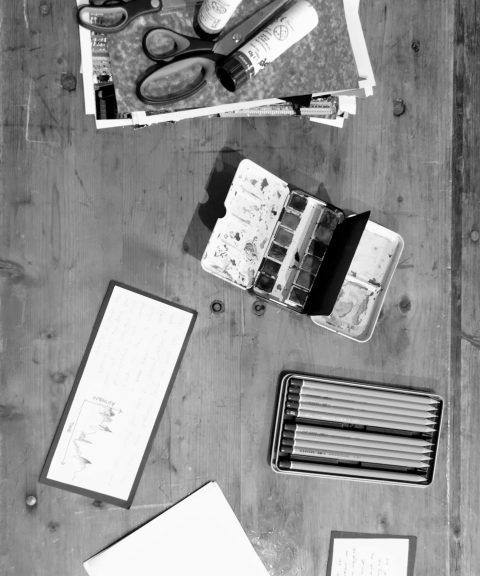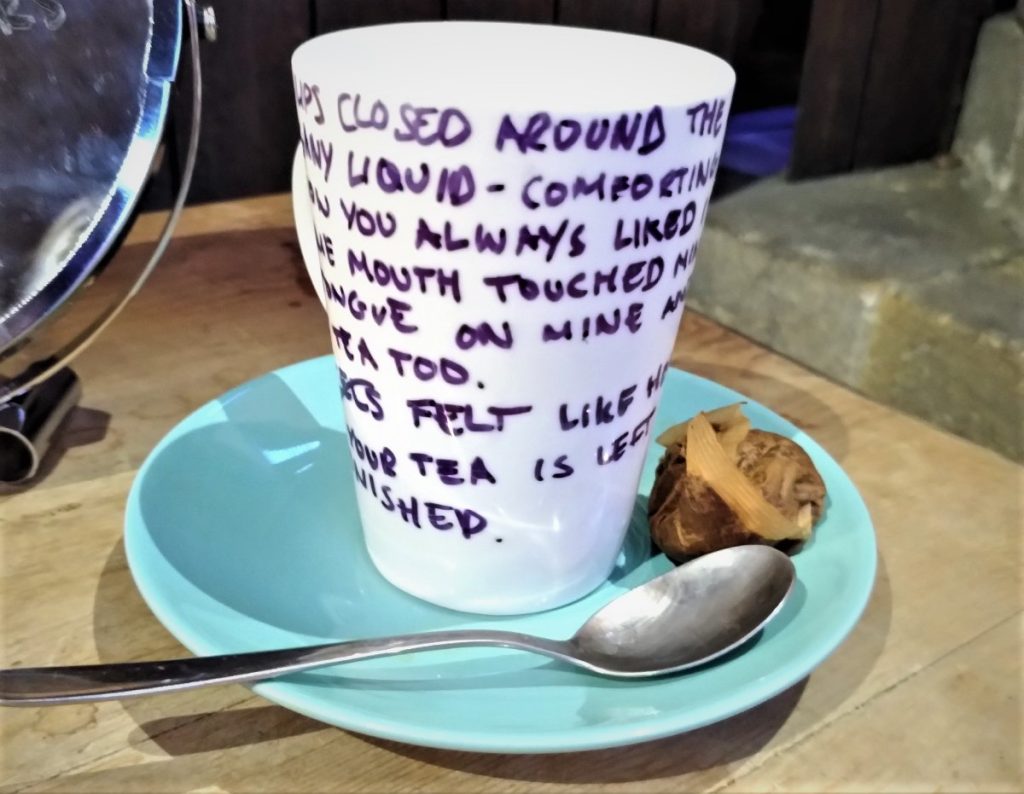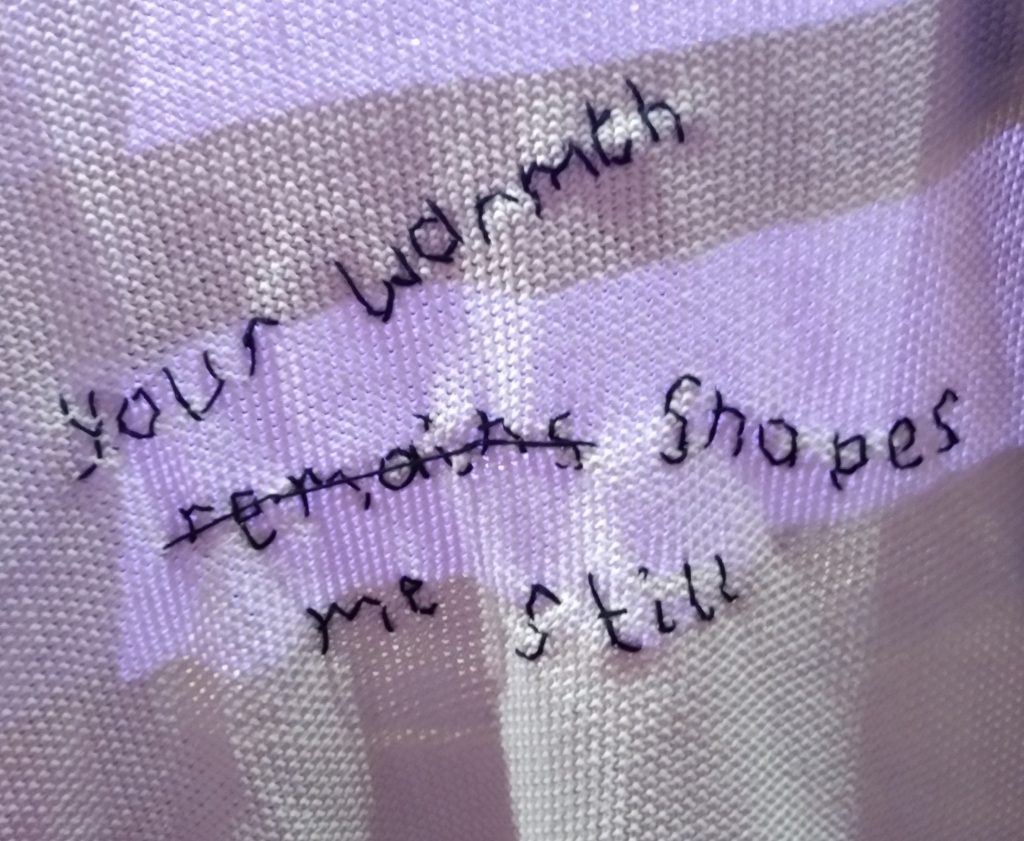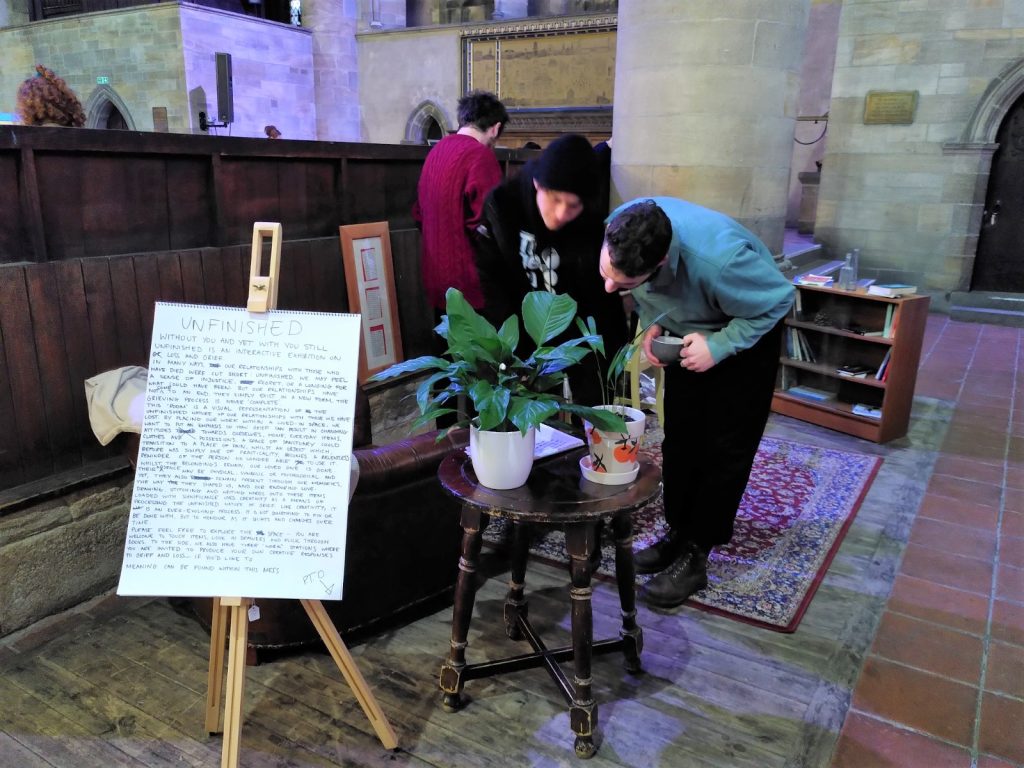By Ellie Montgomery
Over a year ago, I lost my partner Dave – he was 26 and I was 23. Since then, it’s been a strange journey of rediscovering who I am, realising what’s important to me as well as finding ways of processing my grief. Creativity has always been a way in which I’ve expressed myself but, following such a traumatic loss, writing and reading have become an important method in helping me to channel and understand my emotions.
Our exhibition title ‘Unfinished’ emerged. We hoped to communicate that, whilst the person we love may no longer be physically with us, creativity enables our relationship with them to endure
Subsequently, when Anna suggested the possibility of putting together an exhibition which showcased some of our creative responses to grief, I was very keen to get involved. In our initial meetings, we reflected about what we wanted the space to represent: what did we want to say about the people we have loved and lost? What themes have come up for both of us during our experiences of death? And how do we want to present our work in a way which opens up meaningful conversations about grief?
Over the following weeks, it seemed that the discussions we were having kept circling back to the feelings of incompleteness which are often left in the wake of a loss. Our exhibition title ‘Unfinished’ therefore emerged. In this we hoped to communicate that, whilst the person we love may no longer be physically with us, creativity enables our relationships with them to endure.
We also discussed the overwhelming presence of loss which can be forged in absence of our loved ones and wanted to create a visual expression of this feeling. The exhibition consequently took form as a living room containing everyday objects in which a person appeared to be missing. By writing, drawing and stitching onto these everyday items, we wanted to put an emphasis on how this absence can result in changing attitudes towards ourselves, our home, objects, clothes and possessions. A space of sanctuary could transition to a place of pain whilst an object which, before was simply one of practicality, is an unrelenting reminder of the person no longer able to use it. Whilst the belongings remain, our loved one is gone; this discordance again related to our intention to reflect on feelings relating to a lack of resolution or closure.
Alongside the main exhibition itself, we also had three stations which gave people the chance to draw, write and listen. At the drawing and writing stations, we encouraged participants to leave their own responses. We hoped for people to not only explore how creativity could positively impact their understanding of grief, but how comfort can be found in community and the sharing of experiences.
The listening station featured a podcast style interview (available at the bottom of this page) where Anna and I asked each other a few questions about our personal experiences of loss. Initially, this felt like quite a daunting task but, following the recording, I felt positive about the conversations we had shared. Losing someone so close to me has really made me recognise that, by nature, I am quite a private person and I’ve found it uncomfortable to speak openly about my experiences of loss in a setting which wasn’t with a counsellor. Throughout the exhibition, I have actually uttered the words ‘my partner died’ more often than ever before. This has been really healing for me. Allowing myself to feel more vulnerable around my peers filled me with a new sense of confidence and I hoped that it would encourage those who listened to perhaps do the same.
I came away from the event with a new found certainty that sadness is not weakness and it felt incredibly empowering
The importance and value of showing vulnerability was also something which became a key element when delivering our ‘Creativity Workshop’ on one evening of the exhibition. This was my first time leading a workshop as well as one of the first times in which I’d discussed my experiences of loss with strangers. Together, both myself and those who attended created a safe space to explore our hurt as well as reflect on how we have been forever shaped by those no longer with us. I came away from the event with a new found certainty that sadness is not weakness and it felt incredibly empowering.
I’ve really loved being involved in this work for the Student Grief Network and, at the moment, we are looking into ways which we can develop its reach further. All of the drawing and writing responses we received were so touching, heartbreaking and moving. I know I can speak on behalf of Anna as well as myself when I say that we were so grateful for each and every one of them, no matter how short or long. Thank you to all who supported this project and to those who had the bravery to share their vulnerability alongside our own.
Here you can listen to the recording Ellie and Anna created for the exhibition, reflecting on some key themes in their own grief journeys. With thanks to Edd Wilding for his technical support!






